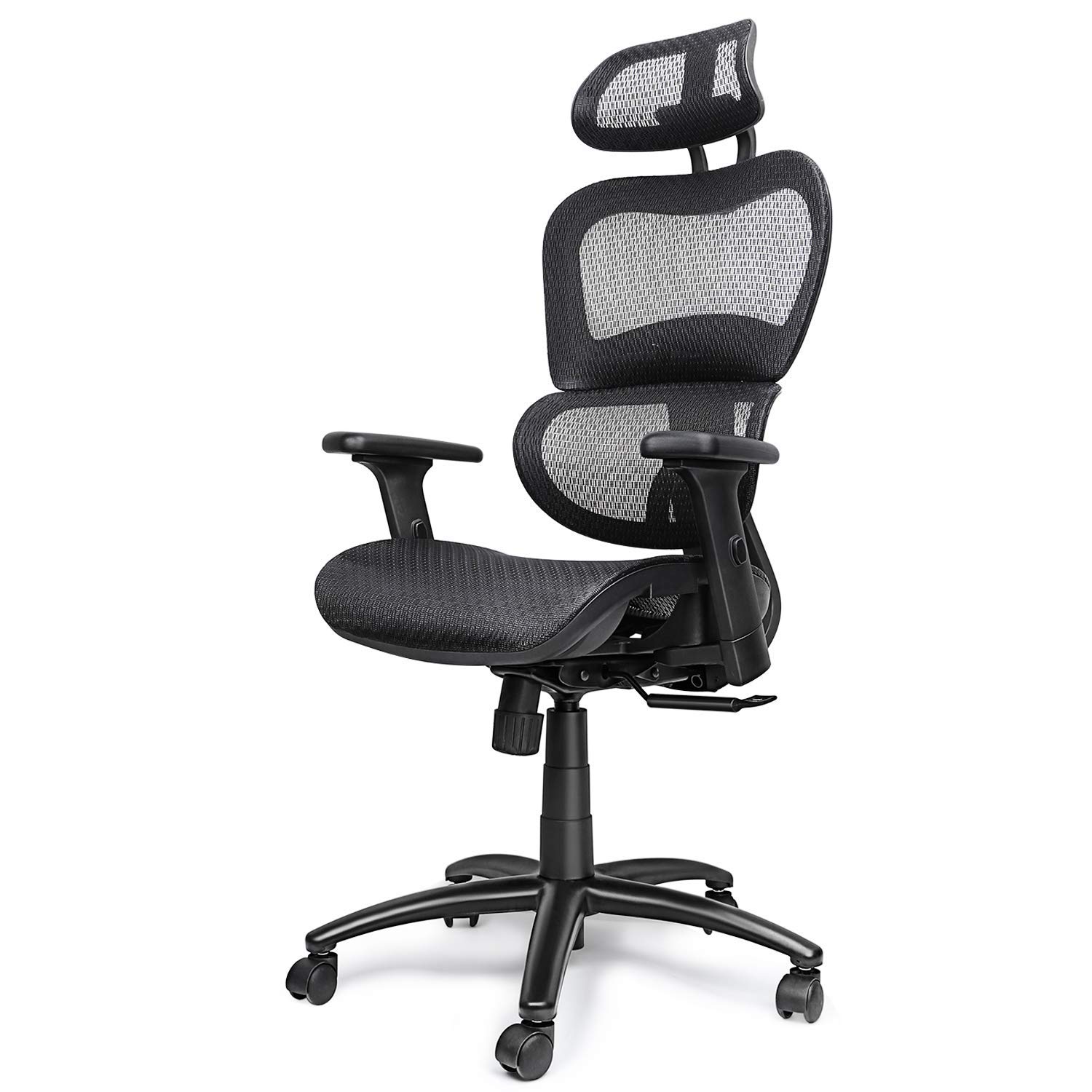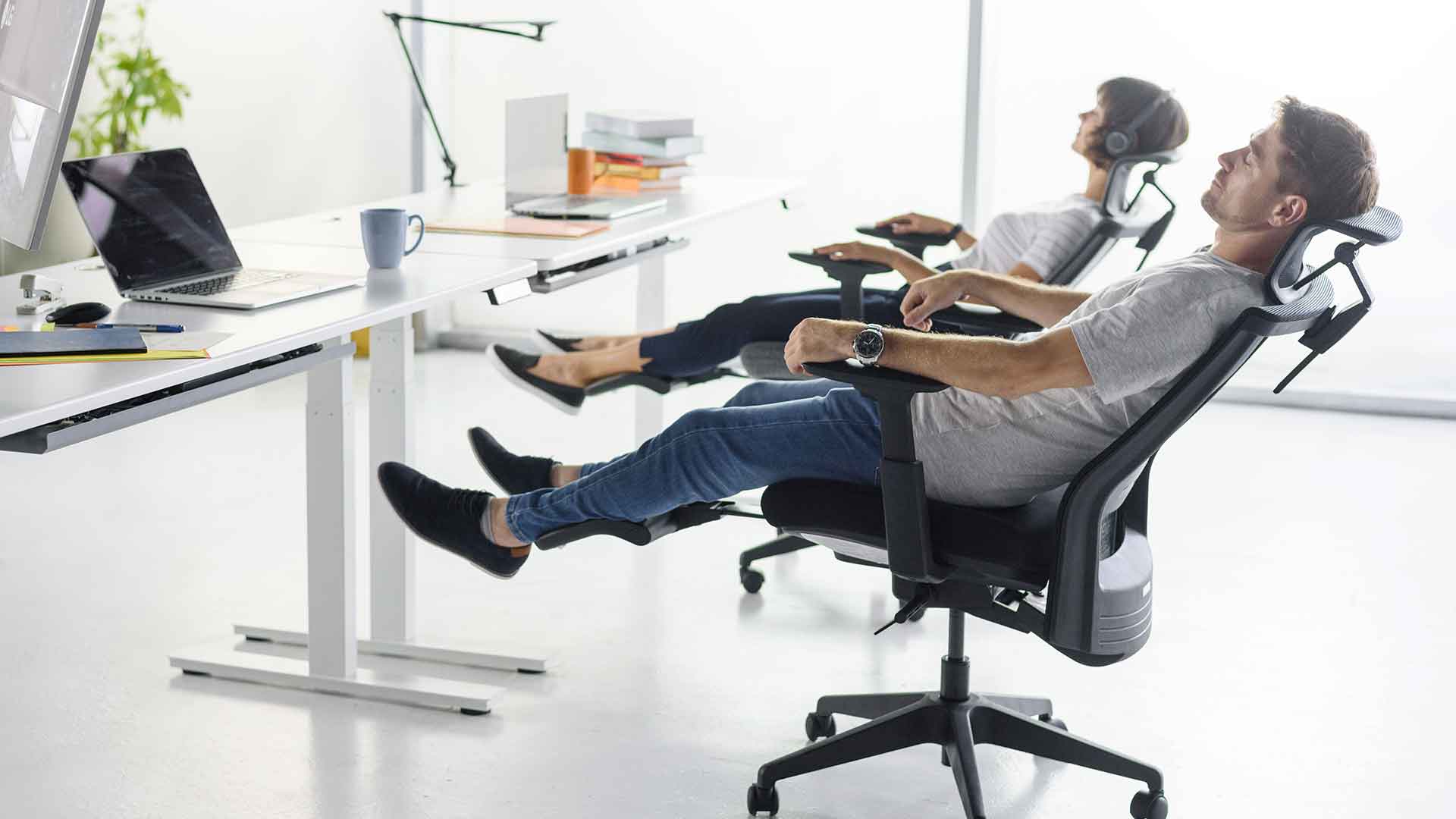Types of Office Chairs for Back Pain Relief: Best Type Of Office Chair For Back Pain

The right office chair can be the difference between a productive workday and a day spent battling back pain. Choosing wisely means understanding the various types available and their impact on your posture and overall well-being. This exploration will guide you through the key features and benefits of several popular options, empowering you to select the chair that best supports your individual needs and helps alleviate back pain.
Ergonomic Chair Features, Best type of office chair for back pain
Ergonomic chairs are designed to promote proper posture and reduce strain on the back, neck, and shoulders. Key features include adjustable lumbar support, allowing you to customize the curve of the backrest to match your spine’s natural curvature. Adjustable height ensures your feet rest flat on the floor, maintaining a 90-degree angle at your hips and knees. Adjustable armrests provide support for your forearms, reducing shoulder tension, and can be adjusted to accommodate different desk heights and body types. These features work in concert to create a supportive and adaptable seating experience.
Comparison of Office Chair Types
The following table compares four popular types of office chairs, highlighting their key features and suitability for back pain relief.
| Chair Type | Adjustability | Material | Price Range | Suitability for Back Pain |
|---|---|---|---|---|
| Ergonomic Chair | Highly adjustable (height, lumbar, armrests, backrest) | Mesh, fabric, leather | $200 – $1000+ | Excellent; designed for optimal spinal support |
| Task Chair | Moderately adjustable (height, sometimes armrests) | Fabric, mesh, leatherette | $50 – $300 | Good; suitable for many but may lack customized lumbar support |
| Executive Chair | Variable; some offer high adjustability, others minimal | Leather, high-quality fabric | $150 – $1000+ | Variable; depends on specific features; high-end models can be excellent |
| Kneeling Chair | Limited adjustability; primarily height | Wood, fabric, foam | $100 – $300 | Can be beneficial for some, but not universally recommended; may require adjustment period |
Benefits and Drawbacks of Each Chair Type
Understanding the advantages and disadvantages of each chair type is crucial for making an informed decision.
Best type of office chair for back pain – Ergonomic Chairs:
- Benefits: Superior back support, adjustable features cater to individual needs, promotes good posture, reduces strain and pain.
- Drawbacks: Can be expensive, may require some assembly, might not suit all body types perfectly.
Task Chairs:
- Benefits: Affordable, widely available, comfortable for shorter periods.
- Drawbacks: Limited adjustability, may not provide sufficient lumbar support for long hours, can contribute to poor posture if not used correctly.
Executive Chairs:
- Benefits: Often stylish and comfortable, high-quality materials, some models offer excellent support.
- Drawbacks: Pricey, adjustability varies greatly between models, some lack crucial ergonomic features.
Kneeling Chairs:
- Benefits: Encourages upright posture, can alleviate pressure on the lower back for some users.
- Drawbacks: Not suitable for everyone, may cause discomfort in knees and legs, requires an adjustment period.
Proper Posture and Chair Type Influence
Maintaining proper posture is vital for back health. A good office chair significantly influences this.
Imagine a straight line from your ear, through your shoulder, hip, and knee to your ankle. This is ideal posture. An ergonomic chair, with its adjustable lumbar support and height, helps maintain this alignment. A task chair, while less adjustable, can still support good posture if used correctly with proper awareness. Executive chairs, depending on their design, may or may not support this alignment, while kneeling chairs encourage an upright posture, though potentially at the expense of knee comfort. Slouching, common in chairs lacking adequate lumbar support, disrupts this alignment, leading to back pain. Think of a stack of books – neatly stacked, they are stable; leaning, they become unstable and prone to falling.
Maintaining Your Office Chair and Back Health

Investing in the right office chair is only half the battle. Sustaining a healthy back requires diligent care and proactive maintenance of both your chair and your posture. Think of your chair and your body as a finely tuned instrument; regular attention ensures optimal performance and prevents costly breakdowns. Ignoring this crucial aspect can negate the benefits of even the most ergonomic chair, leading to discomfort and potential long-term problems.
Proper posture isn’t just about looking good; it’s the cornerstone of back health. Maintaining correct alignment distributes your weight evenly, minimizing strain on your spine and reducing the risk of injury. A proactive approach to posture, combined with regular chair adjustments and short breaks, is a powerful combination for back pain prevention.
Practical Tips for Maintaining Good Posture While Seated
Good posture is a dynamic process, not a static pose. It involves conscious effort and regular adjustments throughout the day. The following tips will guide you towards a more comfortable and healthy seated position.
- Sit upright: Avoid slouching or hunching. Imagine a string gently pulling you upwards from the crown of your head.
- Engage your core: Gently tighten your abdominal muscles to support your spine. This provides natural stability and reduces strain.
- Feet flat on the floor: Ensure your feet are comfortably placed on the floor or a footrest. This prevents your knees from being higher than your hips, which can strain your lower back.
- Adjust your chair height: Your thighs should be parallel to the floor, with your knees bent at a 90-degree angle.
- Use lumbar support: Proper lumbar support maintains the natural curve of your lower back. Adjust the lumbar support on your chair or use a separate lumbar pillow.
- Keep your screen at eye level: This prevents you from straining your neck and shoulders. You should be able to look straight ahead without tilting your head up or down.
A Weekly Schedule for Chair Adjustments and Posture Breaks
Consistency is key when it comes to maintaining good posture. Integrating short, regular breaks and chair adjustments into your weekly routine is crucial for preventing back pain and fatigue.
Here’s a sample schedule; adapt it to your personal needs and work patterns:
| Day | Activity |
|---|---|
| Monday | Adjust chair height and lumbar support; 5-minute stretching break mid-morning and afternoon. |
| Tuesday | Check posture throughout the day; 5-minute walk at lunch. |
| Wednesday | Adjust chair armrests; 10-minute stretching break mid-morning and afternoon. |
| Thursday | Review seating position; 5-minute walk at lunch. |
| Friday | Full chair adjustment check; 10-minute stretching break mid-morning and afternoon. |
| Saturday & Sunday | Focus on active rest and light exercise to counterbalance prolonged sitting. |
The Importance of Regular Exercise and Stretching for Back Health
While maintaining good posture and adjusting your chair are vital, regular exercise and stretching are indispensable for overall back health. These activities strengthen supporting muscles, improve flexibility, and enhance blood circulation, reducing stiffness and pain.
Regular stretching can significantly improve spinal mobility and reduce the risk of injury.
Here are a few simple stretches you can perform at your desk:
Shoulder Rolls: Gently roll your shoulders forward in a circular motion 10 times, then backward 10 times. This relieves tension in your neck and shoulders.
Neck Stretches: Tilt your head to the right, bringing your ear towards your shoulder. Hold for 15-20 seconds, then repeat on the left side. Gently rotate your head clockwise and counterclockwise, holding each position for a few seconds.
Torso Twists: Gently twist your torso to the right, then to the left, holding each position for 15-20 seconds. This improves spinal mobility.
Cat-Cow Stretch: This stretch can be done sitting down. Inhale, arch your back, and lift your chest. Exhale, round your back and tuck your chin to your chest. Repeat several times.
